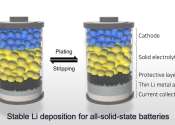New code mines microscopy images in scientific articles
Deep learning is a form of artificial intelligence transforming society by teaching computers to process information using artificial neural networks that mimic the human brain. It is now used in facial recognition, self-driving ...
Apr 9, 2024
0
30









